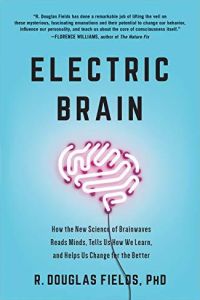Join getAbstract to access the summary!

Join getAbstract to access the summary!
R. Douglas Fields
Electric Brain
How the New Science of Brainwaves Reads Minds, Tells Us How We Learn, and Helps Us Change for the Better
BenBella, 2020
What's inside?
Brainwaves are the next tech breakthrough.
1×
Log in to listen to the audio summary.
Recommendation
Are brainwaves how the brain thinks, or an artifact of thinking? Neuroscientist R. Douglas Fields investigates this question and illuminates the history of brainwave discovery. He explores whether changing brainwave patterns can change the brain, and the potential applications and dangers when brainwaves are harnessed by technology.
Summary
About the Author
Internationally recognized neuroscientist R. Douglas Fields, PhD, is an expert on nervous system development and plasticity at the National Institutes of Health.
In our Journal
Learners who read this summary also read
Book
Book
Book
Book
Book


















Comment on this summary